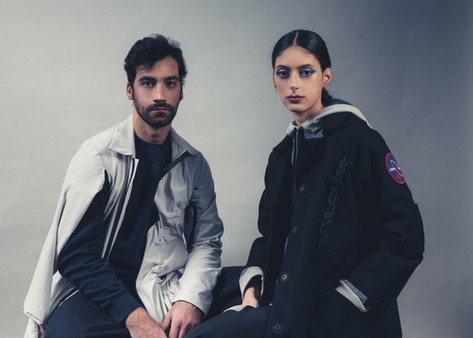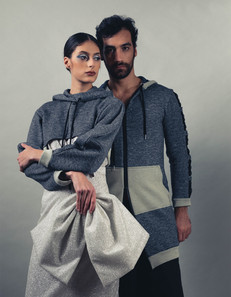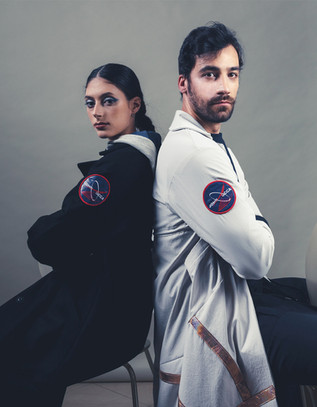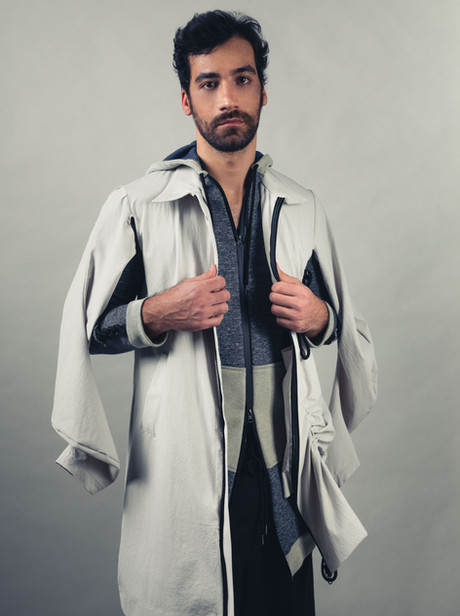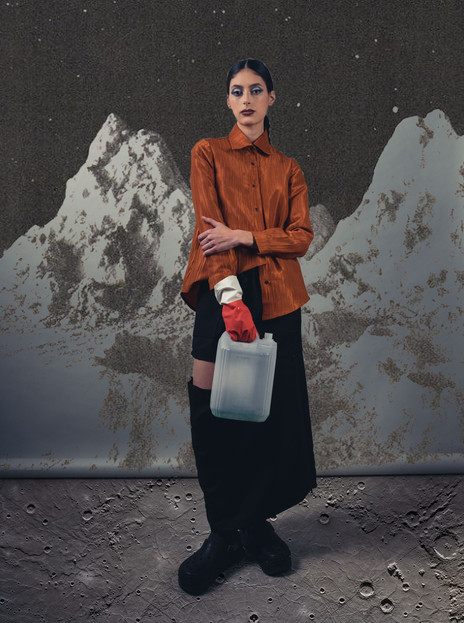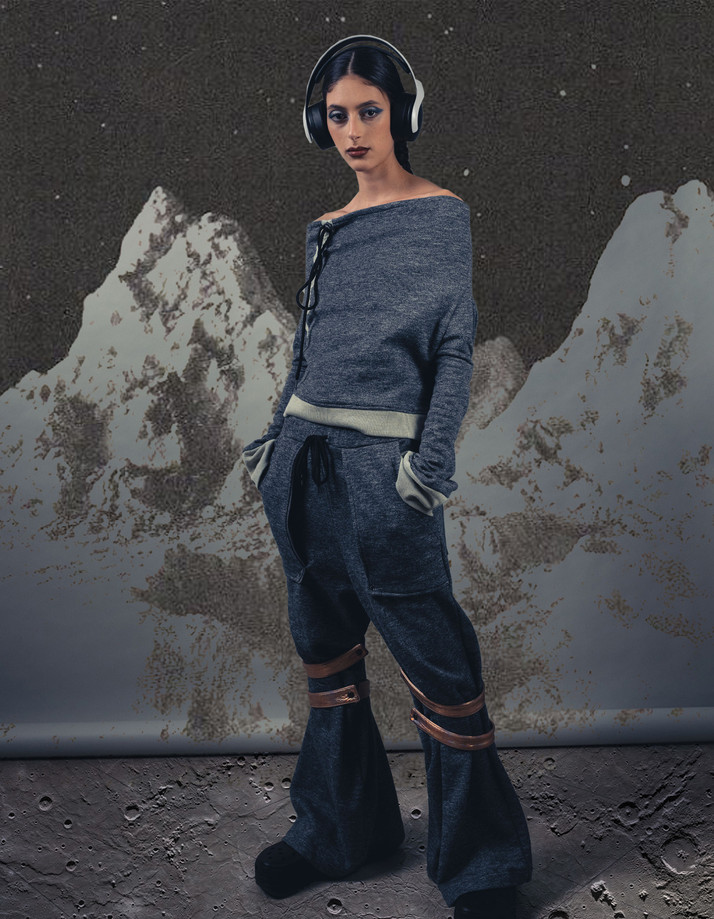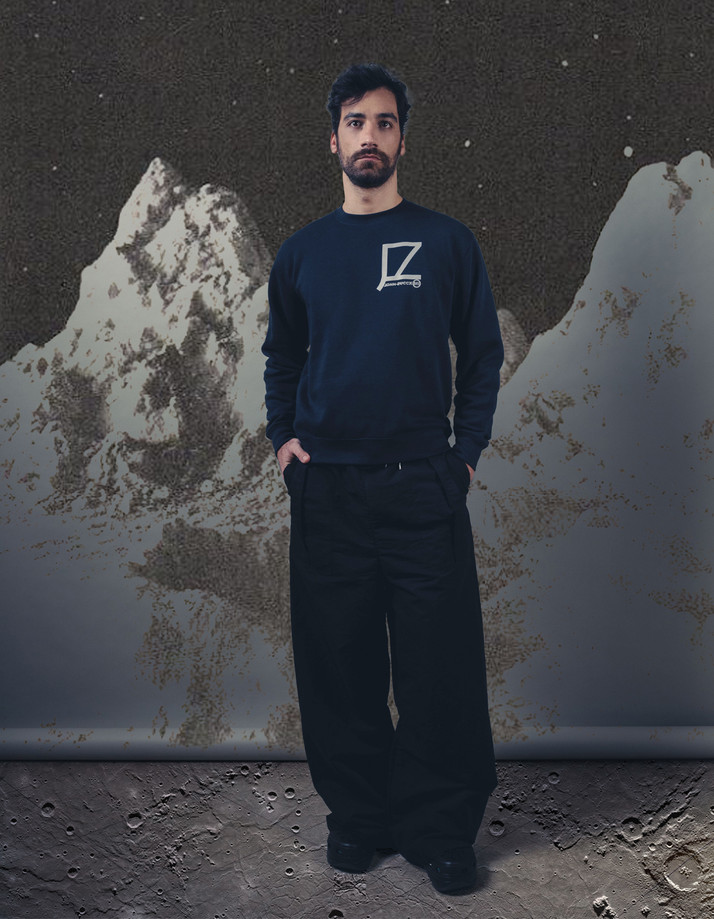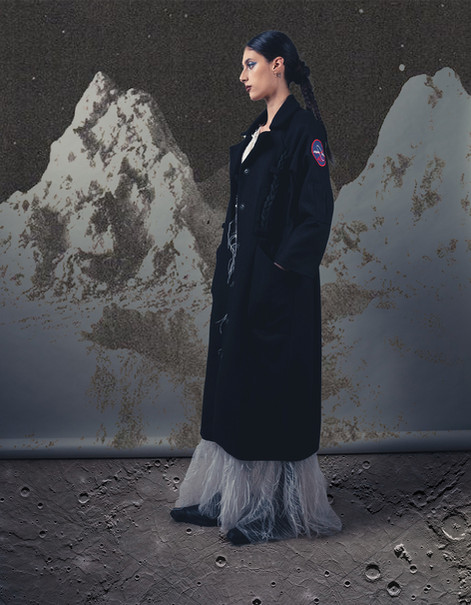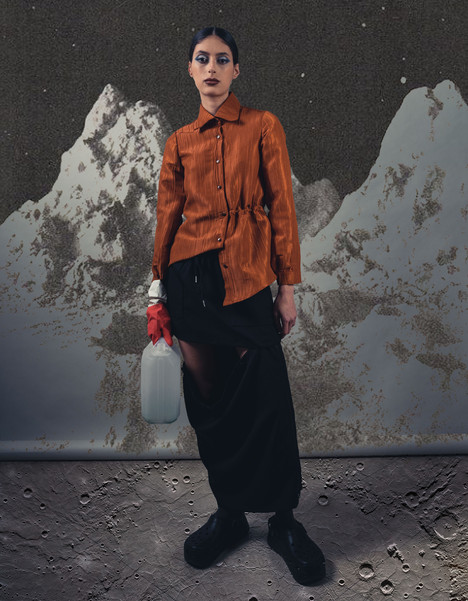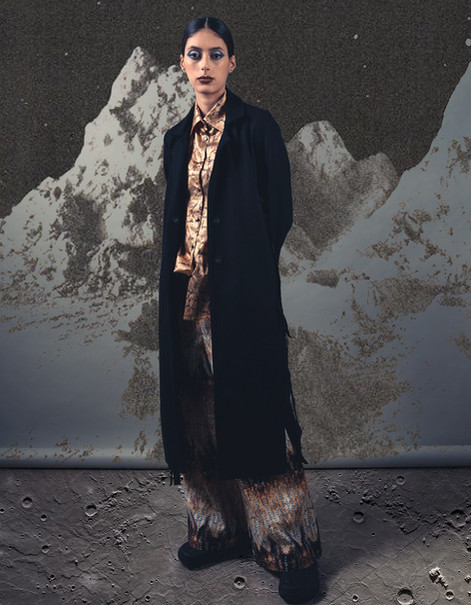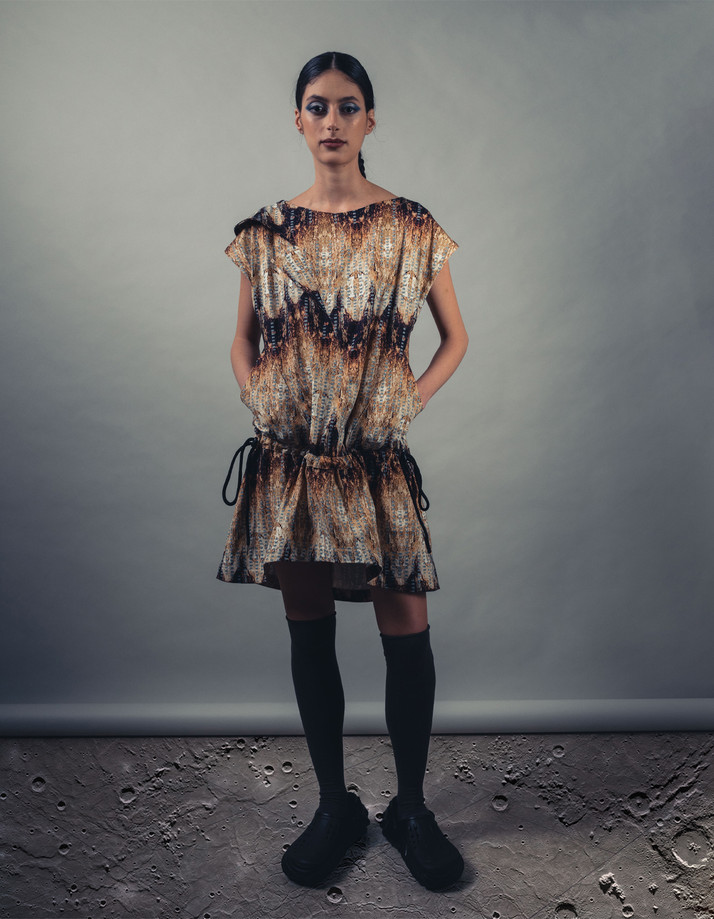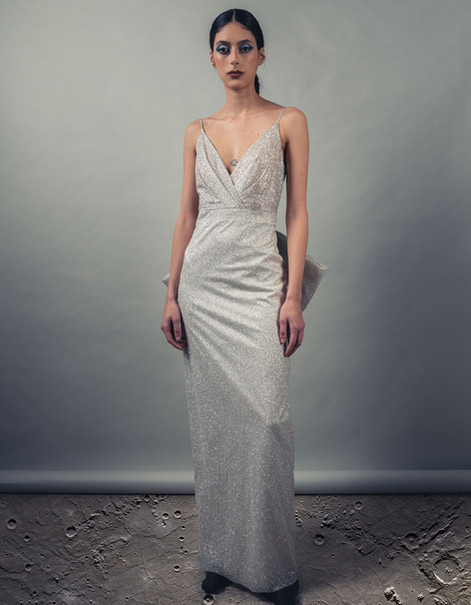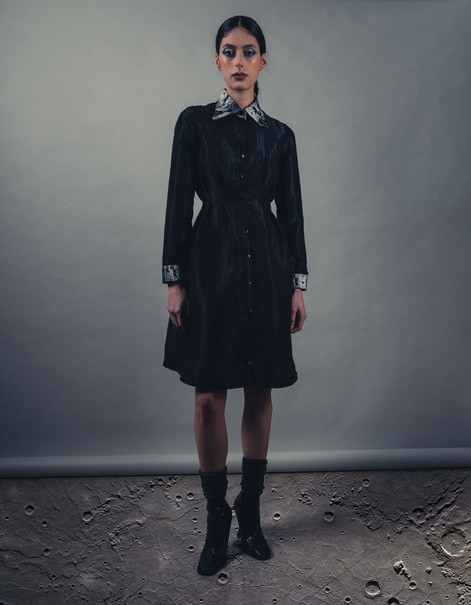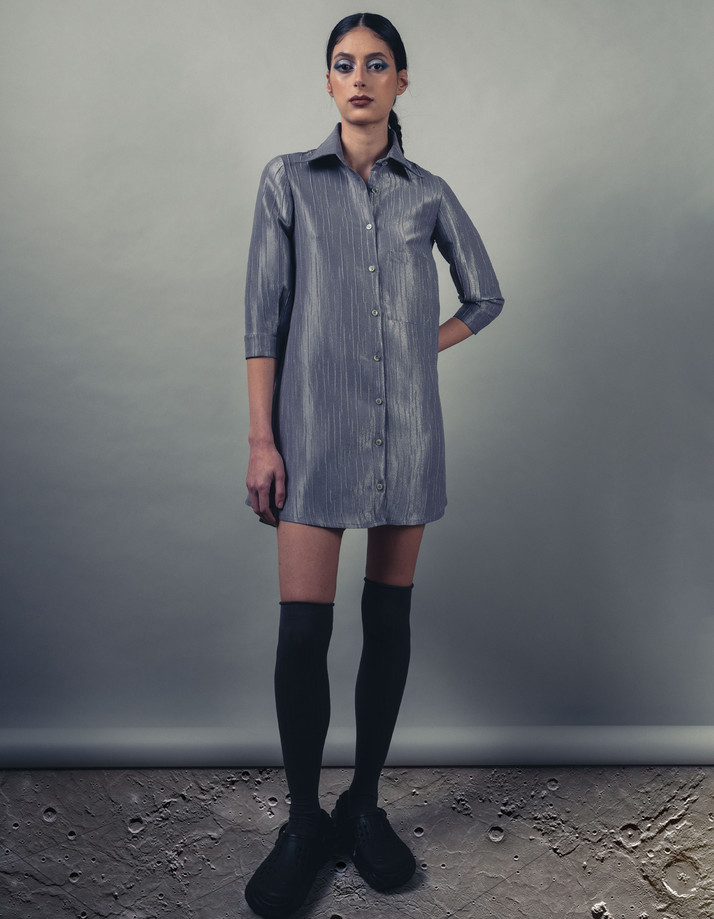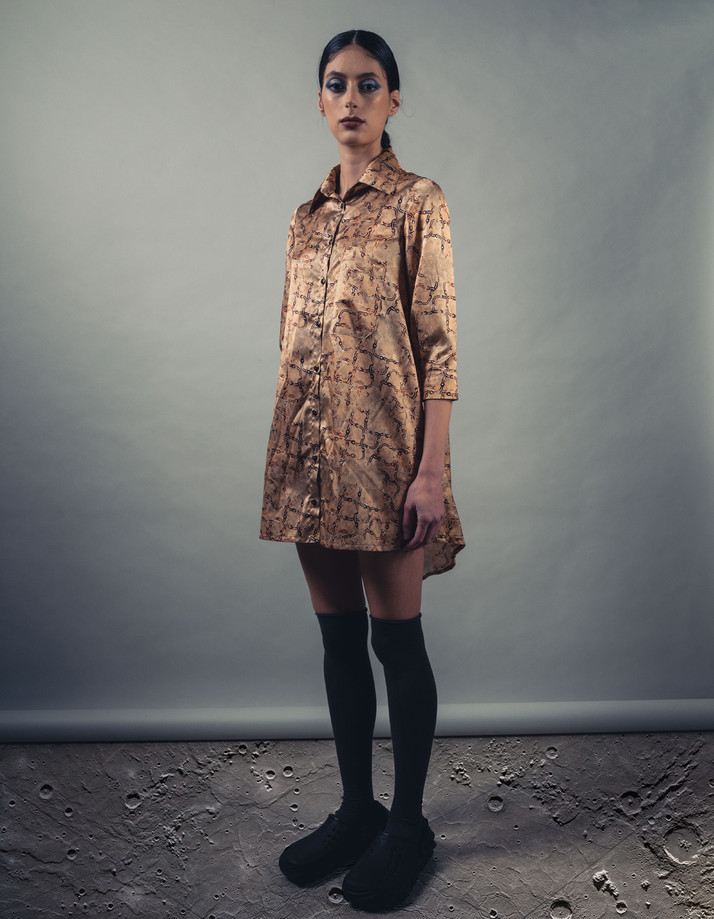NexaVerse FW
NexaVerse: A Journey into Quantum Couture
"NexaVerse" is a groundbreaking fashion collection that draws inspiration from the cutting-edge world of quantum physics and speculative futurism. This collection envisions a future where science, technology, and fashion seamlessly merge to create garments that blur the lines between reality and imagination. Quantum mechanics' principles, with their mysterious and transformative qualities, serve as the driving force behind this collection.
It is also inapired by Filippo Tommaso Marinetti. Marinetti's ideas for fashion design were closely aligned with the broader Futurist philosophy, which celebrated modernity, technology, speed, and the rejection of traditional norms. In fashion, Marinetti's ideas were often characterized by the desire to create avant-garde and dynamic clothing that reflected the spirit of the modern age.
Quantum Fractals and Patterns: Incorporate fractal patterns, inspired by the self-repeating nature of quantum phenomena. Garments feature intricate designs that appear to shift and evolve as the observer's perspective changes.
Entanglement Embellishments: Utilize innovative materials that respond to touch and movement, creating dynamic textures on the garments. These materials could mimic the concept of quantum entanglement, where particles are interconnected regardless of distance.
Holographic Chromatics: Explore holographic fabrics that play with light, color, and reflection. These fabrics shift and change hues based on the angle and intensity of light, resembling the uncertain nature of particles at the quantum level.
Dimensional Layering: Experiment with garments that have detachable or adjustable layers, allowing wearers to customize their look. This concept mirrors the idea of multiple dimensions and parallel universes in quantum theory.
Electromagnetic Energy Silhouettes: Design silhouettes that incorporate glowing elements, symbolizing the release of electromagnetic energy in a quantum event. These elements could be powered by advanced, sustainable technologies.
Wave-Particle Duality Dresses: Create dresses that transition between flowing, ethereal states and structured, angular forms. This transformation mirrors the duality of particles, which can exhibit both wave-like and particle-like behavior.
Dynamism and Movement: Fashion should reflect the rapid pace of modern life. We advocated for clothing that was designed to emphasize movement, embracing flowing lines, asymmetry, and unconventional silhouettes that allowed for greater mobility.
Functionality and Practicality: While Marinetti appreciated artistic experimentation, he also emphasized the importance of practicality. He believed that clothing should serve a functional purpose and suit the demands of modern life.
Anti-Feminine Aesthetic: Marinetti's views on gender roles were reflective of his time, and his fashion ideas often leaned toward an androgynous or anti-feminine aesthetic. He rejected what he saw as overly ornate and restrictive women's fashion in favor of simpler, more practical designs.
Manifestos and Provocation: Marinetti and the Futurists were known for their provocative manifestos and bold declarations. Their ideas for fashion were no exception, often challenging societal norms and pushing the boundaries of conventional taste.
Synchronizing Fashion with Other Arts: Marinetti believed in the unity of different art forms, including fashion. He advocated for collaboration between artists, designers, and craftsmen to create a cohesive aesthetic that spanned multiple disciplines.
By fusing quantum concepts with fashion, "NexaVerse" pushes the boundaries of creativity and challenges our perceptions of reality. The collection aims to spark conversations about the intersections of science, technology, and artistic expression while offering a glimpse into a future where clothing is not just worn but experienced on a quantum level. On the other hand, Marinetti's ideas left a mark on the trajectory of art and design, contributing to the ongoing dialogue about the intersection of fashion, art, and society.
